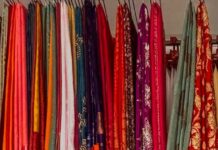From a grandfather to an Emirati living abroad, here’s how Emiratis from different generations celebrate Ramadan, and how the customs are kept alive.
By Hind Aldah
The crescent moon. The string of lights that adorn people’s front yards. The multicolored lanterns. The signature sugary drink that seems to appear only during the holy month. Take a look at how Emiratis celebrate Ramadan.
With the United Arab Emirates being a Muslim country, its citizens are expected to uphold one of the five pillars of Islam: fasting. The UAE is a melting pot of cultures. However, the celebrations that Emiratis partake in differ from those that Muslims of other nationalities celebrate.
What is Ramadan?
The holy month of Ramadan begins with the first sighting of the crescent moon. Ramadan is the ninth month of the Islamic calendar. Muslims avoid eating and drinking from sunrise to sundown. Ramadan is also a period for Muslims to devote their faith and spirituality to God by spending extra time praying and reading the Quran.
There are two main meals in Ramadan: Suhoor and Iftar. Suhoor takes place before the break of dawn, while Iftar is the meal eaten to break the fast.
Muslims usually break the fast with water and dates, as well as with stuffed pastries called sambusa. Of course, you can’t forget Vimto, the popular drink that has just the right amount of sweetness to it.
From the UK to the UAE: Vimto as a Staple Drink
The fruity syrup invented in Manchester, England, somehow wound its way to the Gulf states and has now become a signature drink during Ramadan. Perhaps the high sugar count that gives people that boost of energy after a long day without any food is what makes the drink very popular in Ramadan.
According to Bloomberg, 35 million bottles of Vimto are sold in the Gulf every year.
While Vimto is sold in supermarkets year-round, shelves quickly become emptied of stock as Ramadan nears. People fill up their cupboards with bottles of Vimto to drink at Iftar time.
Back to the Start
Hassan Aldah, a retired police officer, sat in front of me as he reminisced about spending his Ramadan days as a young man.
“It’s changed a lot; the people changed,” he said. Nowadays, he said, people make so much food but don’t eat it all, whereas in his time, much of what was consumed was enough for an entire family.
Another change Aldah mentioned was that people order so much food these days and that when he was growing up, ordering food wasn’t an option.
The women of the household would cook, but men would also assist. This is different nowadays, as most Emirati households have domestic helpers who usually cook for the family.
Traditional rice-based dishes like machboos and thereed, made from Emirati flat bread known as regag, is distributed among neighbors. Additionally, Emirati dessert like lgaimat and batheeth are widely eaten in and around Ramadan time and is also shared with family.
And still, that tradition has not been lost among the younger generation.
UAE’s Sharing Culture
Shaikha Alshamsi, an Emirati university student, and her family share traditional dishes with their neighbors and other relatives. They either knock on their doors and hand them the food or drive a car to share their meals with one another.
“Iftar meals are not only shared with families or neighbors but also with people who are in need by setting up tents in many places within the UAE to offer free meals,” Alshamsi said.
These tents are often placed near mosques and provide food for people to break their fast. These food packages customarily contain dates, water and rice-based dishes like biryani.
Due to COVID, these tents were banned starting from 2020, but are back with few restrictions.
“I think the key element of Ramadan in the UAE is bringing people together and being at peace with one another by having family gatherings and by sharing through the exchange of meals in our neighborhoods.” – Shaikha Alshamsi.
In fact, giving to the poor and needy are such an integral part of Ramadan that nowadays, people can easily donate food or money to charity via text message or by the delivery app Talabat. One charity, the Share the Meal by the United Nations’ World Food Programme, allows people to choose to feed a child for a designated amount of time.
A Different Kind of Ramadan
For Maha Harqoos, an Emirati diplomat living in New York City, there is a stark difference to how she spends Ramadan.
For starters, she said that it only feels like Ramadan when she’s at a friend’s house who also celebrates it.
“You don’t see Ramadan special TV programs for example like we do back in the UAE and also the roads are not decorated with Ramadan decorations like they do for Halloween and Christmas,” she said.
Being away from her family requires her to communicate with them over the phone, but because of the time difference, she only talks to them during iftar time.
The Games of Ramadan
Iconic board games and card games are always laid out on the floor or on a table in family or friend gatherings. Among those games are UNO cards, Sequence and the most famous game being Carrom. Though Carrom originated from Southeast Asia, it is quite popular in the UAE and the surrounding region.
Back in the day, however, Aldah would gather around with family and friends and play with cards while the television would be on in the background.
These decades-old practices are what the UAE is keen on upholding. Bringing people together and sharing through the joys of food and family time.


















